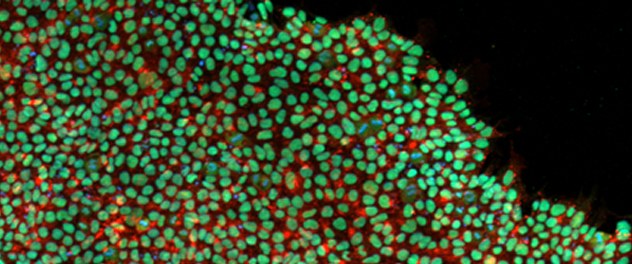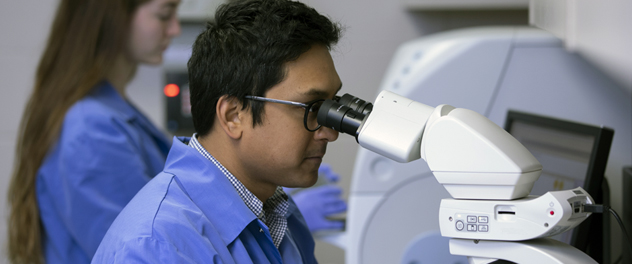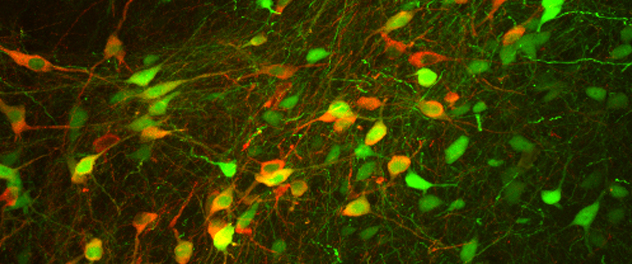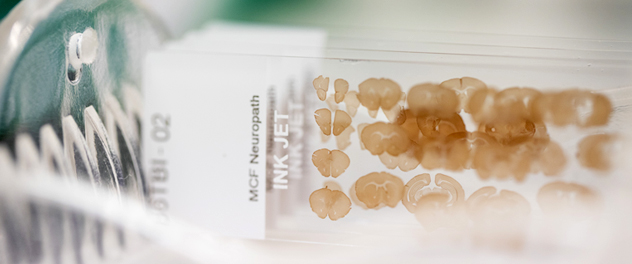-

Parkinson's disease in a dish
The Neurobiology of Parkinson's Disease and Related Disorders Lab unravels mechanisms of neurodegenerative disease processes using human induced pluripotent stem cell models.
-

Understanding alpha-synucleinopathies
The Neurobiology of Parkinson's Disease and Related Disorders Lab advances therapeutics for synucleinopathies.
-

Modeling diseases using viral vectors
The Neurobiology of Parkinson's Disease and Related Disorders Lab uses viral vector gene delivery to model neurodegenerative disease.
-

Understanding neurodegeneration
The Neurobiology of Parkinson's Disease and Related Disorders Lab studies mechanisms of neurodegeneration in mouse models.
Overview
The Neurobiology of Parkinson's Disease and Related Disorders Laboratory led by Pam J. McLean, Ph.D., focuses on understanding the cellular and molecular mechanisms underlying neurodegeneration in Parkinson's disease, Lewy body dementia and related diseases.
Parkinson's disease is the most common movement disorder, affecting approximately 1% of the general population in the U.S. It is characterized clinically by:
- The appearance of tremor.
- Slowed movement and speech, also known as bradykinesia.
- Muscle rigidity.
- Postural instability.
Dementia with Lewy bodies is a related dementia disease that is a leading cause of cognitive impairment, second only to Alzheimer's disease. Patients with dementia with Lewy bodies have diminished cognition and parkinsonism symptoms.
Neuropathologically, Parkinson's disease presents as a loss of neurons in the substantia nigra, leading to a loss in the neurotransmitter dopamine and the presence of protein accumulations inside neurons called Lewy bodies in affected brain regions. In dementia with Lewy bodies, Lewy pathology also is found in cortical brain regions. Parkinson's disease and dementia with Lewy bodies are mostly sporadic in nature, with 90% to 95% of occurrences thought to be due to a combination of environmental and complicated genetic factors. The remaining 5% to 10% of occurrences are due to specific gene mutations in one of multiple genes associated with the disease.
The first gene to be genetically linked to Parkinson's disease was SNCA. This gene encodes a protein called alpha-synuclein. This small presynaptic protein misfolds and accumulates as Lewy bodies, Lewy neurites and glial cytoplasmic inclusions in the brain.
Dr. McLean and her colleagues develop and use cell-based and animal models to study the role of alpha-synuclein in Parkinson's disease and related diseases, such as dementia with Lewy bodies. Research projects focus on understanding the improper folding and aggregation of alpha-synuclein that occurs in the disease process.
The lab uses cell and animal models as powerful tools to study what causes alpha-synuclein to aggregate and accumulate in cells, as well as to explore ways to remove the abnormal protein and protect the cells. Ultimately, the goal is to translate research findings into new therapies for people with these devastating diseases.
Affiliations
Dr. McLean's lab is affiliated with several other areas at Mayo Clinic.